In the minds of many, the era of the Indy Roadster, which had dominated the Indianapolis 500 since the early 1950s, ended after 1964 with the final appearance of the big front-engine cars in Victory Circle. However, there were at least two groups who believed that a modern roadster could still take on the “funny cars” and did so into the 1970s. Here are their stories.
Mallard Roadster Part 1
While the Mallard Roadsters that Jim Hurtubise entered in the Indy 500 are the primary subject here, it should be noted that they weren’t the first Roadsters that Herk built for himself. In 1964, he constructed an Offenhauser-powered Watson coilover clone and qualified 22nd in that year’s 500. He’s credited with a 14th place position, though his race ended on lap 141.
After that, Herk raced at the Milwaukee Mile, where he engaged in a nose-to-tail, three-way battle for the lead with Rodger Ward and AJ Foyt. Cars touched and Herk was thrown into the wall. The reserve fuel tank in the front of the car split, spraying Herk with fuel and flames. He was horribly burned with his hands completely disfigured.
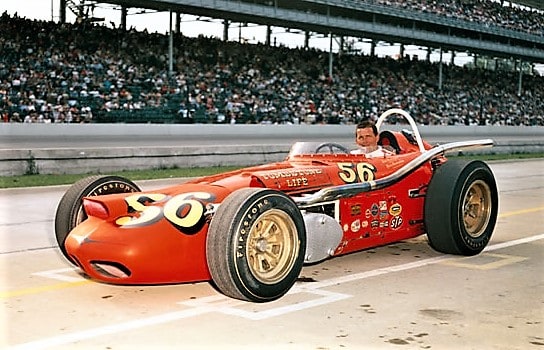
“The accident seemed to have changed his personality,” Parnelli Jones said. “He just didn’t come on the same. He wasn’t as easy to get along with. He got argumentative and he wasn’t so easy to be around,” Jones told the Los Angeles Times. His natural contrarian attitude combined with the crash may have contributed to his crusade to revive the Indy Roadster.
For the 1967 500, Herk appeared with two self-designed, slimmed-down roadsters with a rounded fuselage like the British cars that had taken over the race. The chassis was a lightweight semi-monocoque. The suspension, though, was pure Indy Roadster with its classic solid-axle torsion bar front end and solid rear axle. The turbocharger was offset to the left, the driver to the right. Herk called it a Mallard, though there are several stories as to why.
For the first time since his stunning debut at the Speedway in 1960, Herk failed to qualify for the 1967 500.
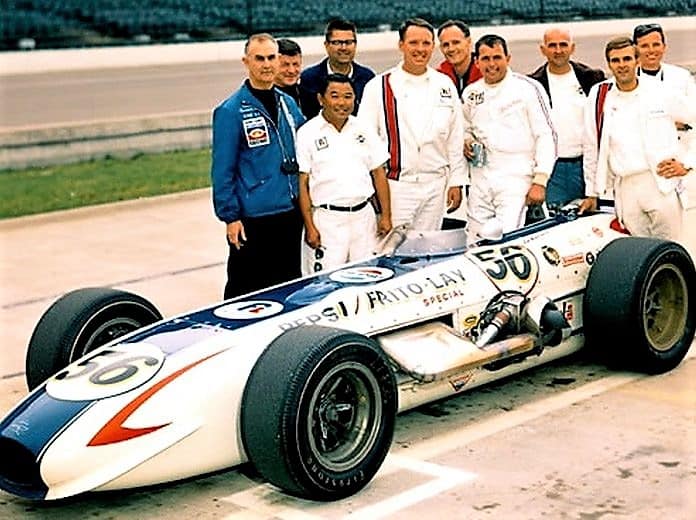
He came back in 1968 with a more well-developed version of the Mallard, though he blew engines something like 20 times. Likely an issue with the fuel injection system, he did make the field, starting and finishing in 30th place, dropping out due to another burned piston. That would be the last appearance of a front-engine Roadster in an Indy 500 race, though not their last appearance at the Speedway
Maxson-Jefferies Roadster
Meanwhile, another group was developing a roadster but based on a more modern design. The project was run by the former restaurant equipment manufacturer and Sprint Car owner Darwin Maxson (not Maxon as some sources indicate) and his son-in-law, custom car builder Dean Jefferies. It was the backing that legendary Indy Roadster pro Quin Epperly, who built the car, had been looking for.
The design took a more-modern approach to the roadster concept than the Mallards, though it shared the offset engine position with Herk’s cars. The center section was of monocoque design, with independent front suspension. At the back was a Hewland gearbox like the mid-engine cars ran, rear wheels located by a DeDion (Epperly called it a truss-beam) set-up similar to that seen in Grand Prix cars in the 1950s. The reason for the DeDion, Epperly told The Indianapolis Star, was that he “wanted to get away from camber change and tire scrub. They both have adverse effects on handling.”
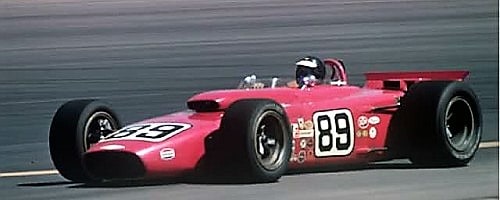
Epperly eschewed aerodynamic wings to enhance cornering speeds, instead according to the Star, “he wants the static weight of the car to hold it down rather than to use wings like a rear-engine car.”
The driver for the 1969 500 would be Indy rookie George Benson, who had successfully competed for Maxson is several Dirt Champ Car races the previous season. He failed to qualify, as the car was not ready in time for him to take his rookie test. At Milwaukee, Benson started 22nd in a field of 24 cars, completed just two laps before the driveshaft failed, but finished 14th after 10 cars were taken out by a first-lap crash.
Benson was replaced by Bruce Walkup, who chalked up a well-deserved 8th after qualifying 24th in the 200-miler in the November 1969 Phoenix race. The car must have been well-suited to Phoenix International Raceway as George Snider started 12th and finished 7th in the March 1970 race there (though only nine cars completed the race distance).
Its final appearance was at the 1970 California 500 at the Ontario Motor Speedway. Denny Zimmerman was chosen to drive but he couldn’t come up to speed in his refresher test and the car sat idle for the race. Its current condition and whereabouts are unknown.
Mallard Roadster, part 2
A new-look Mallard appeared in 1971, featuring a chisel nose and slab sides. Herk continued to enter the Mallards in the 1969, 1970 and 1971 500s but failed to qualify.
For 1972, Hurtubise had acquired a mid-engine 1971 Coyote and qualified 13th. He then rolled the Mallard roadster out on the line on the last day of qualifying. The car didn’t make an attempt and at 6 pm when the field was set, Herk lifted the hood off the Mallard to unveil several cases of cold beer, which he happily distributed to nearby officials, crew and drivers. He entered the ex-Mark Donohue 1972 race winner in the 1973 through 1975, but only qualified in 1974.
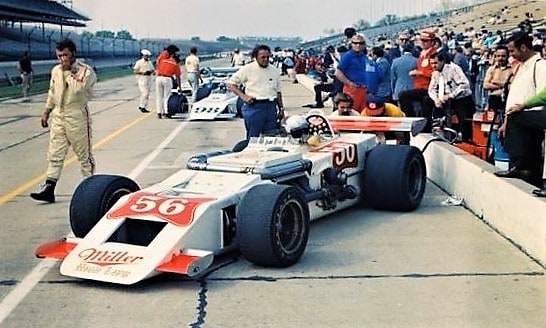
For 1976 and 1977, he brought back the Mallard, likely figuring that if he wasn’t going to qualify, he’d at least have some fun. However, 1978 didn’t turn out to be much fun as Herk was at the center of one of the strangest incidents in Speedway history.
Hurtubise had been denied permission to qualify as the Mallard hadn’t achieved the 180 mph minimum speed required. It’s been claimed by some that USAC set the limit arbitrarily to keep Herk off the line and favor “serious” entrants who had a shot at making the field.
Hurtubise got into a heated exchange with USAC chief steward Tom Binford, and he then climbed into the first car in line reportedly shouting, “If I can’t qualify, no one can!” Hurtubise was coaxed out of the car but then jumped in front of it, preventing the driver from pulling out onto the track on his qualifying attempt.
Herk was restrained by track security but broke free and jumped over the pit wall and out on the race track to disrupt the qualifying attempt. Hurtubise was tackled by fellow driver John Martin and was then detained by police.
The crowd, who had originally been supportive of Herk’s antics, turned on him and began booing him for taking it too far. Hurtubise was banned from the Speedway for the remainder of the month. A strange end to the saga of the final Indy Roadsters.



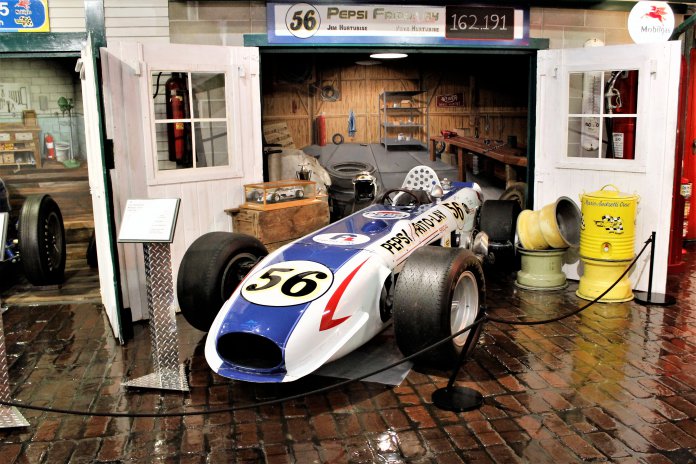


A very sad end to a driver that had grateness written all over him. To make ‘ends meet’ so to speak he was regulated to Bush League Racing, along with another Driver that was another Fan Favorite, Don Bronson, that also met his ‘end’ at Ascot.
Surely the most beautiful looking single seaters ever produced, there is no rear engined car ever produced for racing anywhere that looks better than these great cars. They call the US circuits ‘Speedways’ and nothing personifies speedway more than front engined race cars.
It was the smell of the alcohol exhaust, the sound of the exhaust as the driver lifted his foot off the gas pedal. It was the beautiful design of the roadster from any angle a person may care to look. It was the fact that every part of the car was either chromed or painted, other than the tires and the upholstery.
A true racer who faught to keep racing real not corperate driven spec series look a like parades I went to the Indianapolis museum and saw the roadsters and almost wept at the beauty of them The races I witnessed with my dad drivers like Foyt Jones Ward Branson Hurtubise thank God i was able to be there I do so miss it